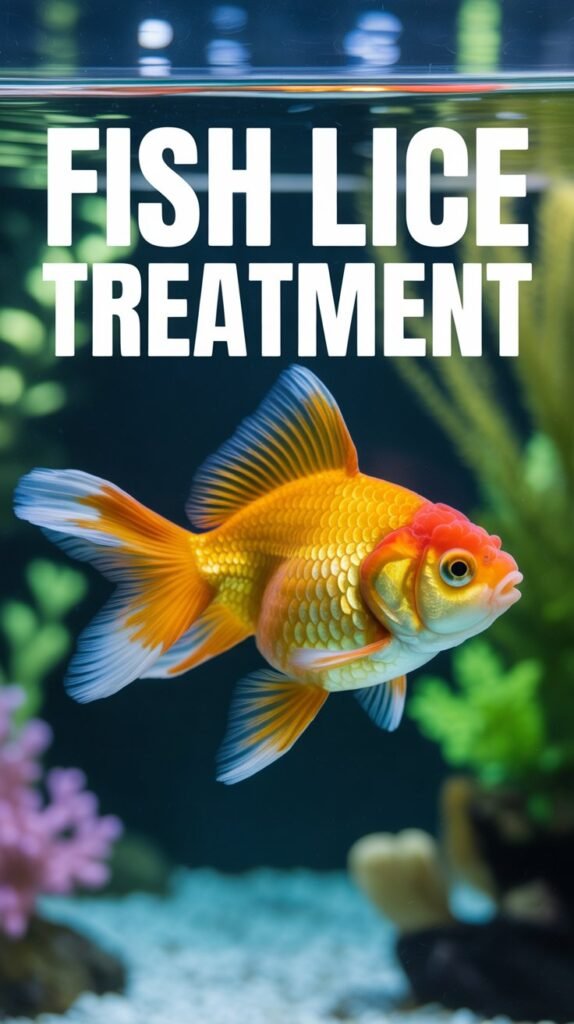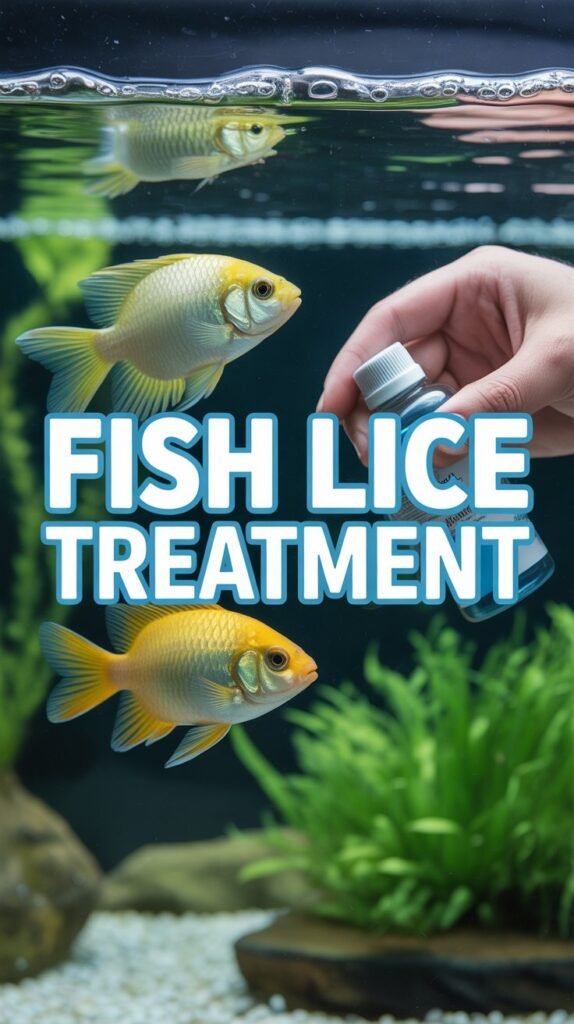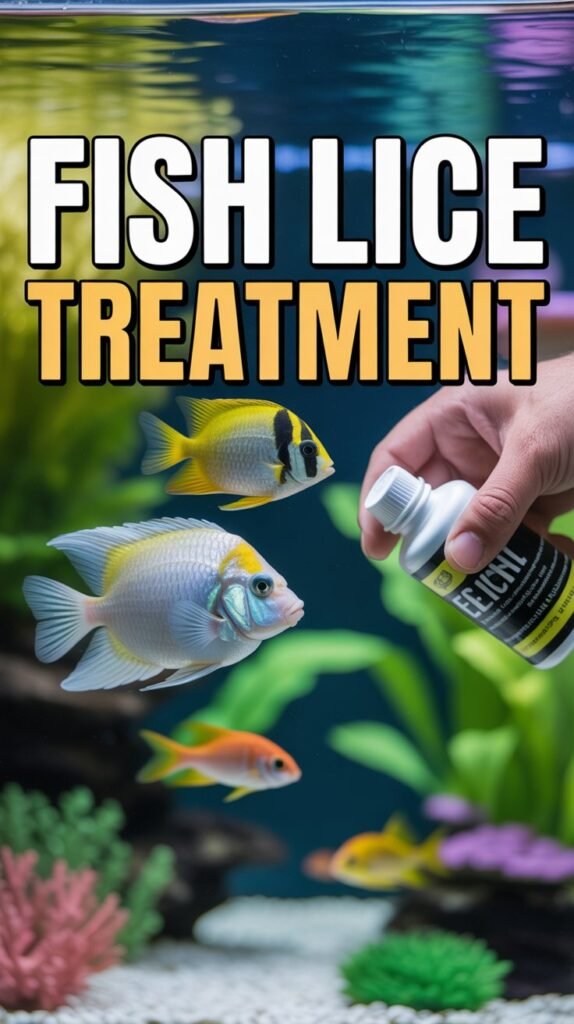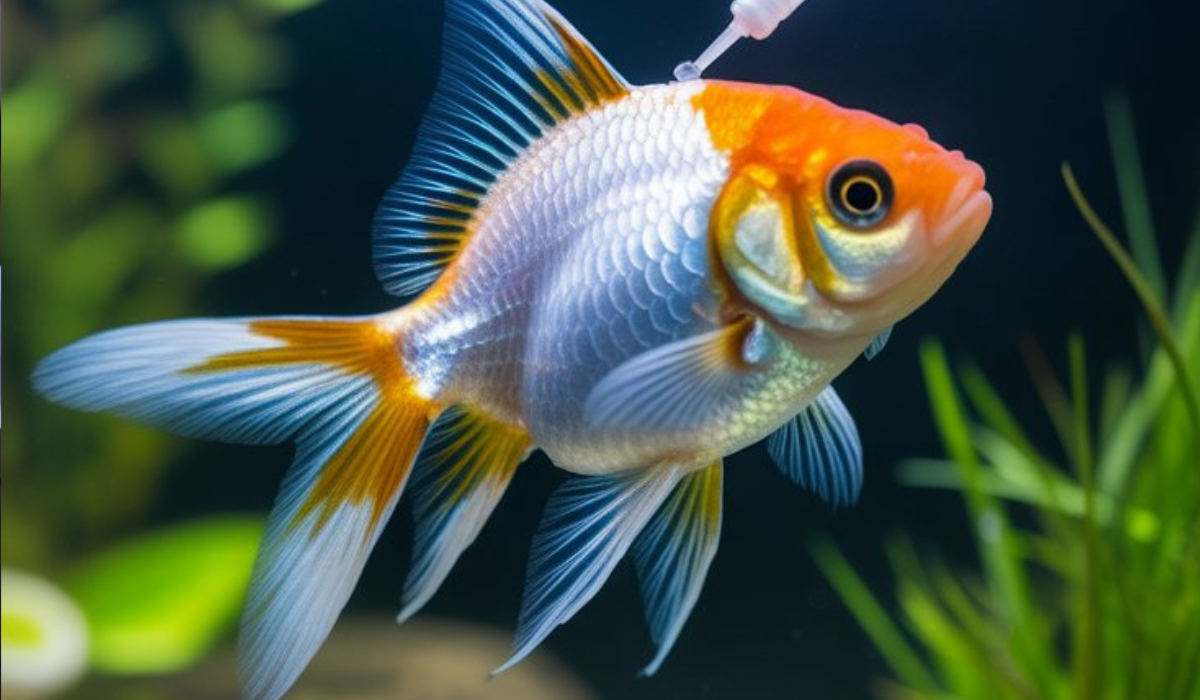Fish lice are one of the most troublesome external parasites that can infest both freshwater and marine aquariums. Known scientifically as Argulus, these parasitic crustaceans feed on the blood and bodily fluids of fish, causing irritation, stress, and potential secondary infections. A fish lice infestation can quickly spread throughout a tank or pond if left untreated, leading to severe health issues or even death.
In this comprehensive guide, we will explore everything you need to know about fish lice — from identifying early signs of infestation to applying the most effective fish lice treatment methods. Whether you’re an aquarium hobbyist or manage a pond system, understanding how to prevent and eliminate fish lice is essential for maintaining a healthy aquatic environment.
What Are Fish Lice?
Fish lice (Argulus spp.) are parasitic crustaceans belonging to the subclass Branchiura. These parasites are usually between 5–10 mm in size and are visible to the naked eye, appearing as small, flattened, disc-shaped organisms that attach to a fish’s body, gills, or fins.
Key Features of Fish Lice
- Body Shape: Flattened, circular, and translucent body, allowing them to blend in with the host.
- Suction Cups: Two specialized suckers help them attach firmly to fish skin.
- Mouthparts: Equipped with a piercing proboscis used to suck blood and body fluids.
- Mobility: Unlike many parasites, fish lice can swim freely between hosts.
Fish lice can infect a wide variety of species — from koi and goldfish in ponds to guppies, cichlids, and even marine fish. Their ability to move freely makes them a serious threat in any shared water system.
Life Cycle of Fish Lice

Understanding the life cycle of fish lice is crucial for effective treatment. Argulus parasites go through several distinct stages:
- Egg Stage
Female lice lay hundreds of eggs on hard surfaces like rocks, plants, or aquarium decorations. These eggs are resistant to most treatments and can hatch after several days to weeks, depending on temperature. - Larval Stage
Once hatched, larvae actively swim in search of a host. They can survive for a few days without attaching to a fish. - Juvenile and Adult Stages
After finding a host, the lice mature quickly, feeding on blood and growing into adults capable of reproducing — restarting the cycle.
The entire life cycle typically takes 30–40 days, which is why repeat treatments are often necessary to completely eradicate infestations.
Causes of Fish Lice Infestation
Fish lice can enter an aquarium or pond in several ways:
1. Introducing Infected Fish
New fish from pet stores, suppliers, or other tanks may already be carrying lice or their eggs. Without proper quarantine, these parasites spread rapidly to healthy fish.
2. Contaminated Plants or Decorations
Live plants, driftwood, or decorations transferred from infected systems can carry lice eggs that later hatch in your aquarium.
3. Wild or Pond Environments
Outdoor ponds are especially prone to infestations since birds and other wildlife can transport fish lice between water bodies.
4. Poor Quarantine Practices
Skipping quarantine is one of the leading causes of introducing fish lice into otherwise healthy tanks.
Preventing introduction is always easier than curing an infestation — which is why careful observation and proper quarantine are essential.
Symptoms of Fish Lice Infestation
Detecting fish lice early is key to preventing major health issues. Below are common signs that your fish may be infected:
1. Visible Parasites
You may see small, round, translucent organisms moving on your fish’s body, fins, or gills.
2. Scratching and Flashing
Infected fish often rub themselves against rocks, plants, or the tank walls in an attempt to remove the parasites.
3. Restlessness and Erratic Swimming
Fish under parasite attack become restless, dart around the tank, or isolate themselves.
4. Red or Inflamed Patches
Bite sites often appear as small red spots, ulcers, or areas of skin irritation.
5. Lethargy and Loss of Appetite
As the infestation progresses, fish may lose interest in food and become weak or listless.
6. Secondary Infections
Open wounds caused by lice can allow bacteria and fungi to infect the fish, leading to diseases like fin rot or septicemia.
Diagnosing Fish Lice
Because fish lice are visible to the naked eye, diagnosis is relatively straightforward. Observe your fish carefully under good lighting conditions — look for:
- Tiny, disc-like organisms moving on the body.
- Red bite marks or inflamed areas.
- Behavioral changes like flashing or jumping.
In severe cases, you can remove a louse gently with tweezers to confirm identification under a magnifying glass or microscope. The circular shape and suction discs make them easy to distinguish from other parasites.
Fish Lice Treatment Methods

Treating fish lice effectively requires addressing both adult parasites and their eggs. Here are proven methods to control and eliminate infestations:
1. Manual Removal
If only a few fish are affected, physical removal can be an immediate solution.
- Use fine-tipped tweezers to gently pluck lice off the fish.
- Treat the removed area with an antiseptic or iodine-based solution to prevent infection.
- Handle the fish gently to minimize stress.
Note: This method is only suitable for mild infestations
2. Salt Treatment
Salt is one of the safest and most accessible remedies for fish lice, especially in freshwater systems.
Procedure:
- Prepare a salt bath with 1–3 grams of aquarium salt per liter of water.
- Place infected fish in the bath for 5–10 minutes, depending on tolerance.
- Return fish to the main tank and monitor closely.
Effect:
The osmotic imbalance created by salt dehydrates and kills lice. However, this method may not affect eggs, so repeat treatment may be necessary after a week.
3. Chemical Treatments
For larger infestations, chemical medications are more effective. Some widely used active ingredients include:
a. Dimilin (Diflubenzuron)
- Interferes with the development of the parasite’s exoskeleton.
- Effective against both juvenile and adult stages.
- Safe for most fish species when used correctly.
b. Potassium Permanganate
- Acts as a strong oxidizer to kill external parasites.
- Use 2 mg/L for short baths or 1 mg/L for prolonged exposure.
- Ensure adequate aeration and monitor water parameters closely.
c. Organophosphate Treatments (Trichlorfon)
- Highly effective but should be used cautiously.
- Follow dosage carefully and avoid overuse, as it can harm delicate species or invertebrates.
d. Formalin
- Used as a short-term bath treatment for external parasites.
- Must be handled with care due to its strong chemical nature.
Always remove activated carbon filters before treatment, as they can absorb and deactivate medications.
4. Raising Water Temperature
Increasing water temperature by a few degrees can speed up the life cycle of lice eggs, causing them to hatch sooner. This allows subsequent treatments to kill newly emerged parasites before they can reproduce.
For instance:
- Raise the temperature to 28–30°C (82–86°F) for several days.
- Combine with chemical treatment for best results.
5. Quarantine and Isolation
Move infected fish to a quarantine tank during treatment. This prevents lice from spreading to healthy fish and allows for better dosage control.
Clean and disinfect the main aquarium or pond:
- Scrub decorations, rocks, and surfaces to remove eggs.
- Vacuum the substrate to eliminate debris.
- Replace part of the water and disinfect equipment.
6. Biological Control
Some natural predators, such as certain species of wrasses (in marine tanks) or cleaner fish, can help control lice populations. However, this is more suitable for large or natural pond systems rather than small home aquariums.
Post-Treatment Care
Once treatment is complete, focus on helping your fish recover and preventing reinfection:
- Monitor Fish Health: Continue observing for any signs of stress or recurring parasites.
- Improve Water Quality: Maintain optimal water parameters (pH, ammonia, nitrite, and nitrate).
- Feed High-Quality Diets: Strengthen the immune system with protein-rich and vitamin-enhanced foods.
- Perform Regular Water Changes: Replace 20–30% of water weekly.
- Add Aquarium Salt (Optional): Helps reduce stress and promote healing.
Prevention of Fish Lice

Prevention is the most effective strategy against fish lice. Follow these best practices:
1. Quarantine New Fish
Always quarantine new fish for at least 2–4 weeks before adding them to your main tank or pond.
2. Disinfect New Plants and Equipment
Soak new plants, rocks, or decorations in a mild disinfectant or salt solution to kill parasite eggs.
3. Maintain Clean Water Conditions
Regular water changes, good filtration, and balanced feeding prevent stress and strengthen fish immunity.
4. Inspect Regularly
Observe your fish frequently for any behavioral or physical abnormalities.
5. Avoid Overcrowding
Overcrowded tanks increase stress and disease susceptibility.
Impact of Fish Lice on Fish Health
Fish lice not only cause discomfort but can lead to severe health consequences:
- Anemia: Continuous blood loss weakens fish.
- Ulcers and Lesions: Open wounds make fish vulnerable to infections.
- Reduced Growth and Reproduction: Chronic stress lowers metabolism and breeding performance.
- Death: Severe infestations can lead to organ failure and mortality if untreated.
Fish Lice in Ponds vs. Aquariums
| Aspect | Ponds | Aquariums |
|---|---|---|
| Risk Level | Higher (due to wildlife exposure) | Moderate |
| Treatment Scale | Large volume requires strong chemicals | Easier to control with water changes |
| Detection | Harder to spot early | Easier to observe |
| Prevention | Requires pond management and wildlife exclusion | Relies on quarantine and cleanliness |
Natural Remedies for Fish Lice
If you prefer to avoid harsh chemicals, a few natural options can help:
- Garlic Extract: Known for antiparasitic properties; mix small amounts into food.
- Neem Leaf Extract: Can act as a mild disinfectant for pond water.
- Salt and Temperature Combination: Effective in mild infestations without harming fish.
- Regular Water Maintenance: Reduces risk of secondary infections naturally.
While these methods may not completely eradicate lice, they support the healing process and fish recovery.
Conclusion
Fish lice (Argulus) infestations can quickly become a nightmare for fish keepers if left unchecked. However, with early detection, effective fish lice treatment methods, and proper preventive measures, you can safeguard your aquarium or pond from this destructive parasite. A combination of chemical treatment, salt baths, and strict quarantine usually provides the best results. Remember, consistency is key — treat the entire system and repeat as needed to ensure all life stages are eliminated.
Healthy fish thrive in clean, well-managed environments. By maintaining excellent water quality and following preventive practices, you can enjoy a beautiful, parasite-free aquatic ecosystem.
FAQs About Fish Lice Treatment
1. What kills fish lice instantly?
Chemical treatments containing Dimilin, Potassium Permanganate, or Trichlorfon are most effective for killing adult lice quickly. Always follow dosage instructions carefully.
2. Can fish lice infect humans?
No, fish lice cannot survive or reproduce on humans. They are species-specific and only parasitize fish.
3. Will salt kill fish lice eggs?
Salt treatment is effective against adult lice and larvae but does not kill eggs. Repeat treatments are necessary after eggs hatch.
4. How long do fish lice live?
Adult fish lice can live for several weeks, while their eggs can remain viable for up to a month in the environment.
5. Can I use aquarium salt in a planted tank?
Use caution — some plants are sensitive to high salt concentrations. Short salt baths for infected fish are safer than dosing the main tank.
6. Is fish lice treatment safe for all fish species?
Most treatments are safe when dosed correctly, but always check compatibility with sensitive species like catfish, loaches, or invertebrates.
7. How can I prevent fish lice from coming back?
Quarantine all new fish, disinfect new plants and decorations, maintain good water quality, and monitor your fish regularly for signs of parasites.

